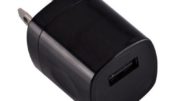Like all of you, I occasionally leave my online cocoon to go shop in brick-and-mortar stores. What bothers me most of all about this process is that I often get bad cell reception in the store.
With AT&T, I rarely if ever have problems while outside, but big stores often have bad cell service indoors and they seem like they don’t care much of the time. They may think that people don’t need cell service while they’re shopping. They may think that bad cell service will stop people from checking online prices while they’re shoppings. Or, they may even think that their free Wi-Fi is the answer to the problem. It isn’t.
Why cell service is bad in large buildings
Large buildings are just like homes in the way they reflect cell signals. The biggest problem is often the material the building is made from. Brick or stucco can reflect signals, and energy-efficient windows are actually the worst culprit. Add to that solar panels on the roof. While energy saving is great, most of the steps to save energy also block cell signals. This is sort of on purpose: energy saving steps often focus on keeping heat in or out of a building. In the case of solar, it’s about capturing the radiation that comes down, not letting it pass.
Builders could create materials that let cell signals though. Solar companies could too. But that doesn’t seem to be on their radar for now and these cell-blocking buildings are going to be with us for a long time.
Assuming cell signals do manage to get through the building itself, they have to make it through all the metal conduits. Metal conduits are often required in local building codes and they can block cell signals too. Add to that the potential noise from hundreds of large fluorescent panels and you have a recipe for bad cell service. Trust me, I’ve wandered around some of these places with a cell meter and I’ve seen 95-98% of the signal simply disappear in some buildings. If the cell signal outside is anything but perfect, it’s going to be practically nonexistent inside.
Why free Wi-Fi isn’t the answer
Some companies, especially large department stores, offer free Wi-Fi. This is great in theory but many of these implementations are close to a decade old. The internet speed is far worse than you can get with cellular. In a lot of cases I’ve found that companies think they’re offering free Wi-Fi when in fact it’s been down for months or years. N one even checks it.
In a best case scenario, you’re probably logging into a public access point which increases the chances your phone will be hacked. You’re potentially providing an email address and agreeing to terms and conditions which you probably haven’t read.
The best answer: tell someone
Business owners aren’t dumb. At least, owners of successful businesses aren’t. They’re going to listen if enough customers complain. Whenever I’m in a store with bad cell service, I try to tell three people. If possible I want one of those people to be a manager type. I tell them that there are amazing devices that can improve cell service for everyone and they start at under $1,000 even for larger spaces. I tell them that they can be installed easily and that Solid Signal has them. I even mention how these devices pay for themselves with extra traffic. A cell booster is better than free Wi-Fi and it’s cheaper than almost any mesh Wi-Fi system too.
This is 2020, folks. People want good cell service 100% of the time. If a store owner has any hope of getting people into a store, they better make sure that store is as welcoming as it can be. One way of doing that is making sure people don’t feel disconnected while they’re shopping.
Come on business owners, it’s the least you can do.





